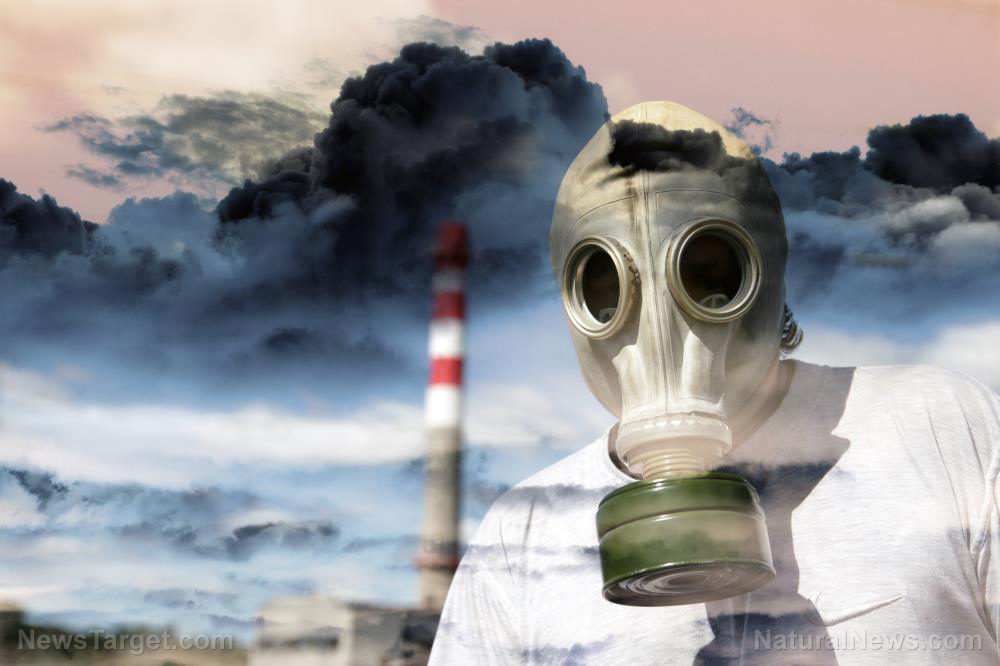WHO: 9 out of 10 people in the world breathe polluted air
01/31/2019 / By Edsel Cook

The levels of airborne particulate matter have reached a dangerous state in most cities around the world. A TRT World article covered the recent findings of the World Health Organization (WHO), which warned the supply of air for 90 percent of the world’s population is tainted by air pollution.
The international organization found that the lower the wealth of a country, the more toxic particles could be found filling the skies above its urban areas. The air quality in the cities of poor countries has also greatly exceeded the upper limit for what is considered to be tolerable by humans.
Air pollution is responsible for causing more than seven million deaths every year. It has been linked to 25 percent of all deaths from cardiovascular diseases (heart disease and stroke), one out of every three cases of lung cancer, and nearly 50 percent of chronic obstructive pulmonary diseases (such as chronic bronchitis and emphysema).
Most of these fatalities took place in the poorest Asian and African countries. The residents of those regions burn kerosene, wood, and other fuels over open fires to produce heat for cooking and light after the sun has set.
The increasingly dirty air in urban areas can cause diseases and premature deaths
The WHO study stressed that air pollution increases the chances that people will contract these potentially lethal illnesses. High levels of pollution also made it more likely for a patient to die earlier than expected.
Furthermore, the number of lung cancer and chronic breathing diseases is rising as well. The spike is most evident in the poorer countries.
To make matters worse, more than 40 percent of the current global population do not have any means of cleaning the polluted air in their homes. That means three billion people are forced to breathe in all of those particles every day.
The air particulate matter that comprise urban smog include the likes of nitrate, sulfate, and soot. They come from dust, the incineration of chemicals and trash, and fossil fuel emissions from industrial operations, power generation, and vehicular traffic.
It should come as no surprise that these poisonous particles filled the skies of cities and metropolitan areas. Concentration levels in those dense urban areas reached up to 500 percent the maximum safe amount recommended by the WHO.
India has the worst air pollution in the world
The 2018 study by the WHO compiled the world’s largest database on air pollution. Researchers pored over air quality readings from 108 countries.
India suffers from the worst air pollution in the world. Six of the most polluted cities are found here. One of those unfortunate areas is the holy city of Varanasi, which receives millions of devout visitors every year.
In 2013, a different study warned that the air particulate matter levels in India have hit more than 2,000 percent of the WHO’s recommended limit. Currently, the air quality in the capital city of Delhi has gotten 1,400 percent worse when compared to 2016 levels.
In addition to India, its neighbors Pakistan and China are also plagued with high levels of air pollution. The WHO hopes that these three and other countries will have the impetus to clean their tainted air after the problem has been identified.
Many countries have been working hard to reduce emission levels. However, global air pollution still increased by eight percent over the course of 2008-2013.
“98 percent of cities with more than 100,000 inhabitants in countries with predominantly low and middle incomes do not meet WHO air quality targets,” warned WHO representatives. Despite the best efforts of industrialized countries, the average global air pollution level remained a very unhealthy 56 percent.
Sources include:
Tagged Under: air particulate matter, air quality, polluted cities, smog, smog causes
RECENT NEWS & ARTICLES
COPYRIGHT © 2017 ENVIRON NEWS




















